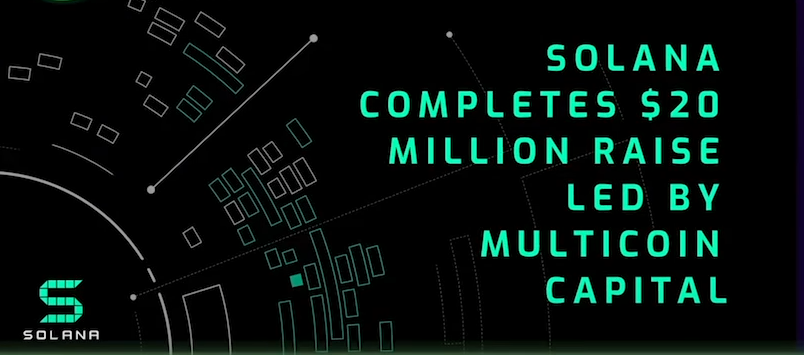Today, we pay attention to a project called Solana, which is very fast in rising speed, and the currency price rises unexpectedly. The token of this project is called "SOL". At one time, it rose to more than 200 US dollars, reaching a market value of 100 billion US dollars, and even once surpassed Uniswap token "UNI", ranking among the top 10 cryptocurrencies. So what is it that has led to a spurt of growth, and many people are optimistic about Solana's future?
Let's find out first, who is its founder? What industry pain points did it solve? Solana's founder's name is Anatoly Yakovenko. Yakovenko joined Dropbox as an engineer in 2017. In that year, he witnessed the vigorous development of the whole ICO, and when he saw that every transfer fee was as high as $60, he thought it was a very high handling fee. Why did the blockchain make the handling fee so high? Therefore, he and his former colleague Greg Fitzgerald in 2004 planned to set up a blockchain network with low handling fee, high TPS, which can accommodate many chains running on it and many projects. After that, two people developed a pure open source blockchain network based on the historical proof mechanism. Moreover, in April 2018, it released its test network. Remember this historical proof mechanism, which is a key technology of the whole Solana network.
Then, when the test network was first launched in 2018, their company was also called Loom. Soon after, Yakovenko Fitzgerald and Stephen jointly founded a new company, which was renamed Solana Labs Solana Lab. So far, Solana Lab is still the main code supplier of the whole Solana network, and it is also its operator and its maintainer, as well as the founder of community and foundation.
Now the Solana Foundation is set up in Switzerland, which is responsible for the ecological development of the whole Solana, fund construction financing and other services. In July, 2019, it completed the Series A financing of $20 million led by Multicoin capital and Capital, and raised another $1.76 million in the Coinlist community auction. In March 2020, Solana's beta main network was officially launched.
Solana's technology is mainly to be a completely open source, anti-censorship, and a strategy for programmers and applications to easily develop DAPP, and it will increase high TPS and low cost. So from the very beginning, Solana was considered as a strong competitor of Ethereum, but its advantage over Ethereum lies in that it can accommodate about 50,000 TPS and 50,000 transactions per second. Moreover, the TPS of its network can increase with the increase of bandwidth, that is to say, when you feel that the network is congested and TPS is insufficient, increasing the bandwidth can increase Solana's TPS, which is an improvement.
Then, in the same network as Solana, two workload proof mechanisms are proposed to improve the throughput and stability of the whole network. One is called POS, which is the rights and interests proof mechanism. The other is Solana's original creation, called Poh proof of history, called historical proof mechanism. This is the key technology of Solana's core. Although eight very important technological innovations were put forward in Solana's white paper, I didn't think that one of these eight technical requirements could break through the whole blockchain technology, a core concern, or a great progress, which broke through a certain difficulty or solved a certain pain point.
However, the historical proof mechanism of Poh workload is indeed a very important technical feature of Solana. I think it may also be an important point that his token SOL can rise so many times and is concerned by many large organizations. Understanding Poh as a consensus protocol, in fact, in my opinion, it is not like a consensus protocol, it can complete the work before the network reaches consensus, that is, it is a globally available, open source and decentralized time source, and it is actually a consensus protocol that can be understood as anti-mechanism, a trusted timestamp.
Solana's native token "SOL”, SOL, after all, has risen too many times. The highest point once reached more than 200 US dollars, and the market value approached 100 billion. It rushed to the top 10 of the whole encrypted market value ranking, and its increase was also very impressive. So SOL uses this algorithm of consensus of entrusted rights and interests, and has the function of encouraging token holders to verify transactions, so SOL has three mechanisms in the network, the first is staking, and you can pledge to get the pledge income. Second, you can use it to pay the transaction cost of the whole chain. The third is that it can represent the rights and interests of community governance. You can own the amount of your tokens and speak on behalf of your community, so that you can agree or prohibit him from passing certain agreements.
That's what I learned and explored about Solana. If there are any inaccuracies, please leave a message in the comment area!

Good information